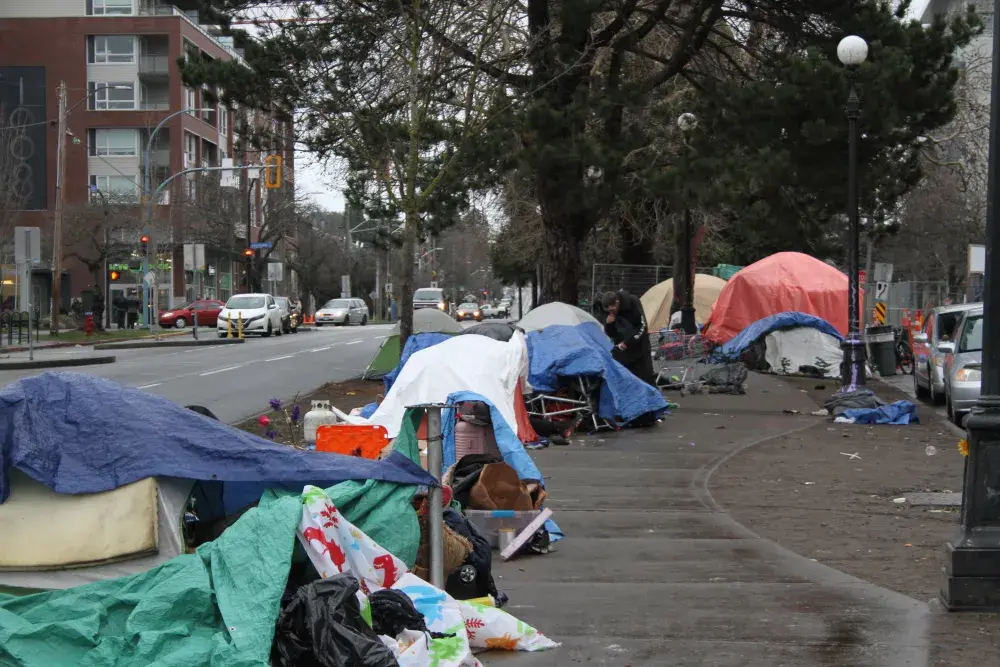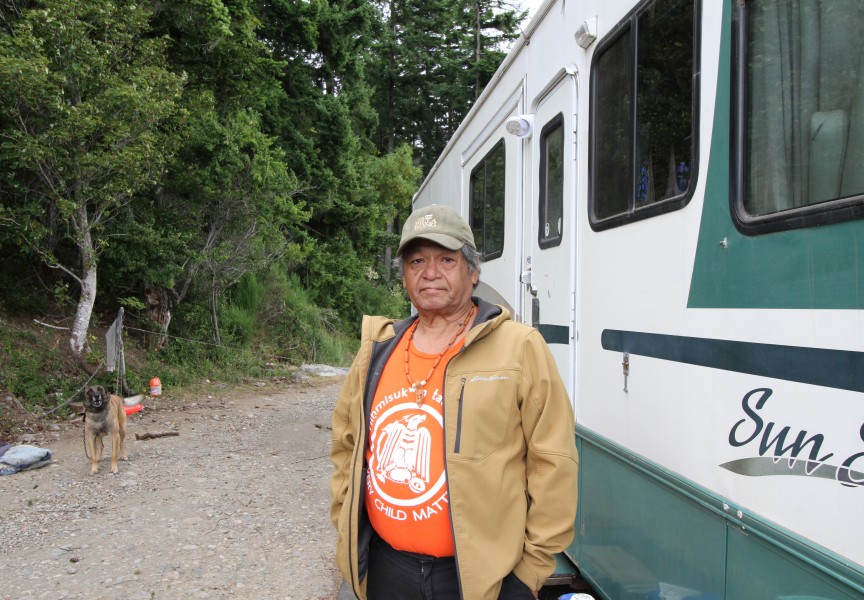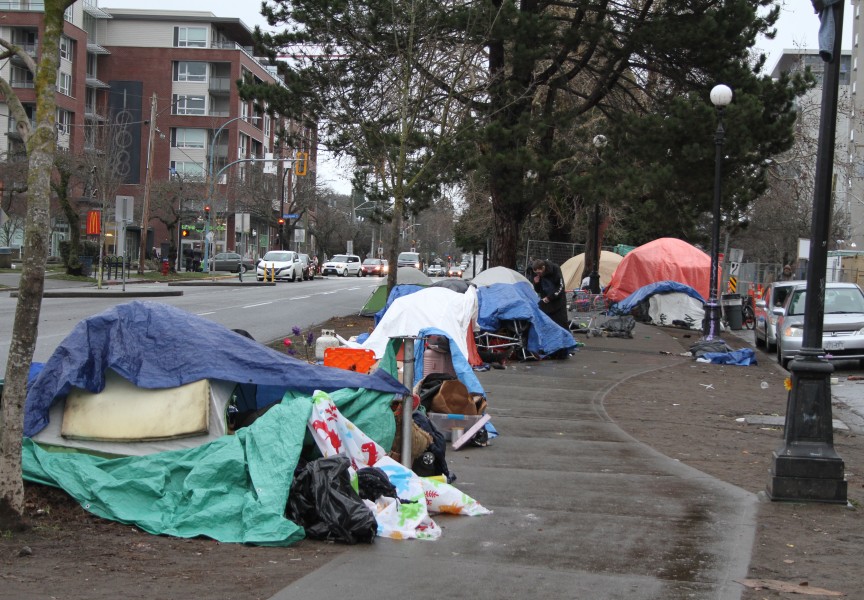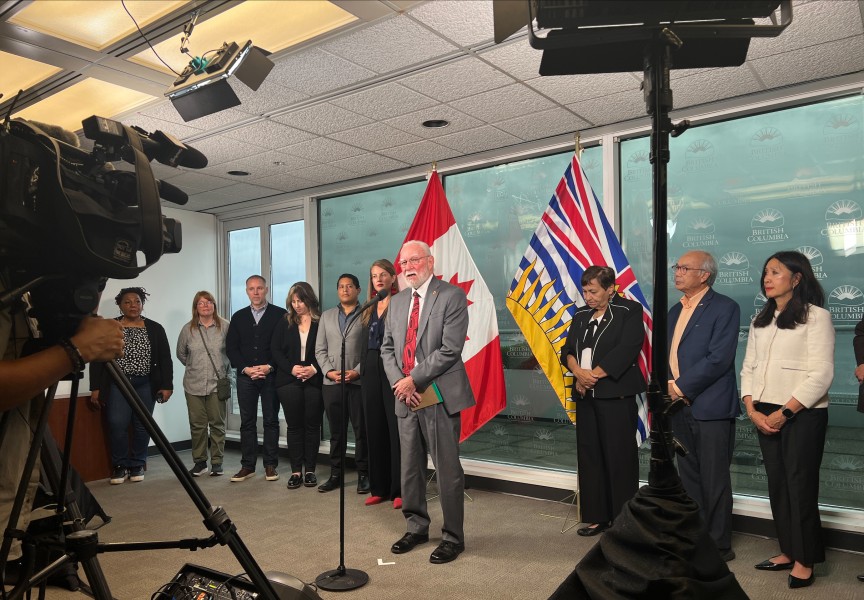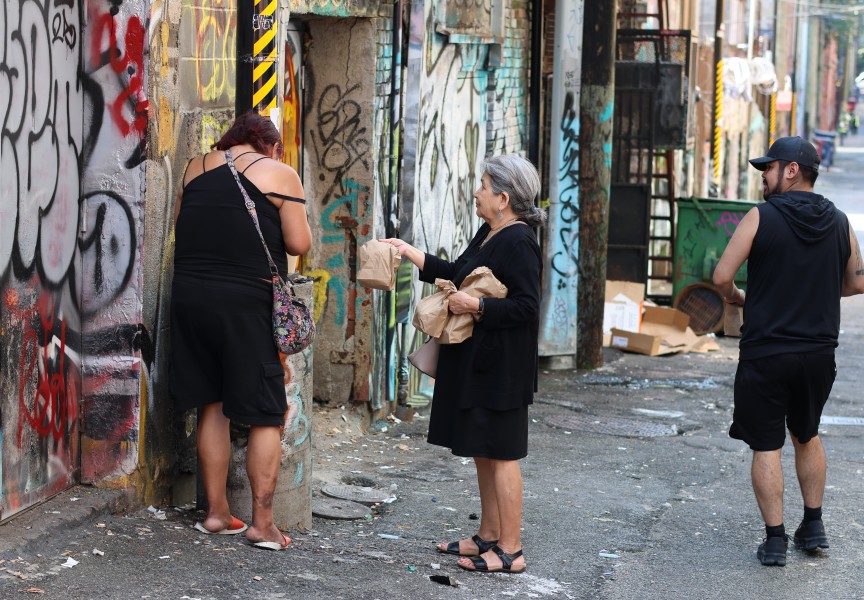When the cold weather snap brought record breaking temperatures through British Columbia, Victoria’s dropped to as low as -10 with a wind chill of -20 - a cold front that the unhoused population was not prepared for.
“Nobody was prepared,” said Karen Mills, co-founder and lead coordinator for the Peer2Peer Indigenous Society, of Victoria’s homeless.
She added that the unhoused are often not aware of extreme conditions unless pre-warned by outreach workers since they usually don’t have phones and computers.
Both Peer2Peer Indigenous Society and Qom Qem Coastal were on the ground doing outreach during the cold spell, she said. With funds raised by the organization, Peer2Peer handed out 64 survival bags filled with hand warmers, scarves, hoodies, candy, and hygiene products while informing people of shelter options available to them.
This year, Our Place Society was able to launch a seasonal winter shelter with an additional 20 mats, alongside their nightly emergency shelter of 35 beds. SOLID Outreach was also able to open a seasonal winter shelter with 30 mats in partnership with St. John the Divine.
Leah Young, director of Housing and Shelter for Our Place Society, shared that their shelter had a waitlist that reached up to 28 people through the cold weather event, even with the addition of 20 mats.
Despite additional mats across organizations in the district, according to the 2023 Point-In-Time survey for Greater Victoria, the single-day snapshot shows 1,665 people are experiencing homelessness in the area, far outnumbering shelter spaces available.
“We know that that's an underestimation of the individuals who are living on the street,” said Brenda Wadey, manager of Housing and Social Supports for the Salvation Army.
“If you look at it logistically, no, there's not enough spaces to make sure that people are okay when we have extreme weather,” said Wadey, reflecting on the availability of beds in Victoria.
Wadey, who oversees their Extreme Weather Response (EWR) Program at Salvation Army’s Addictions and Rehabilitation Centre in Victoria, shared that they opened the service on Jan. 6, the first night the temperatures dropped below zero.
“Our numbers were really low to begin with, and they have been climbing as people were aware that the EWR was open,” said Wadey. “Our max numbers are supposed to be 30, but we were at 41, on our highest night.”
The Salvation Army didn’t turn anyone away, she said. They began shuttling people to one of the City of Victoria’s warming centers to ensure everyone had a warm place to stay.
“A lot of people don't want to enter a shelter, [and] there's a lot of reasons why,” said Mills.
For some, shared Mills, their partner may be banned from the shelter, which would limit the options available to them. Restrictions in some shelters like not allowing pets or certain belongings may also deter people, she continued.
“Who wants to go to a shelter, and maybe finally fall asleep at five in the morning, and at 6:15 a.m., you're being told to pack it up?” said Mills.
Though the City of Victoria ran two warming centers’ during the cold spell, Mills sees a need for a permanent daytime facility; a place where people can go for referrals, to speak with outreach workers, relax and get warm during the hours that shelters are closed.
“That’s been the big conversation these last few days… where do people go?” she said.
But with January’s dropping temperatures, hypothermia and frostbite became a concern for those who remained on the streets through the cold spell.
“From the information that comes from the medical community, people can get frostbite at about four degrees Celsius,” said Wadey. “It's critical that we have places that are open for individuals to come in and get warm.”
A concern for Mills is for those who are using opioids while in the cold weather.
“You’re going to be on the nod,” said Mills, a term used to describe when opioid users drift in and out of consciousness, which can be a sign of overdose. “You’re not going to feel your body temperature, and your body temperature goes down anyways. You’re not going to feel that you’ve got frostbite or you’re going into hypothermia.”
Because of this Mills and her team, who don’t normally do evening outreach, were on the streets throughout the cold nights.
“It's really scary, because we care about these people,” said Mills. “Some of them we've known for many years, they’re like family.”

